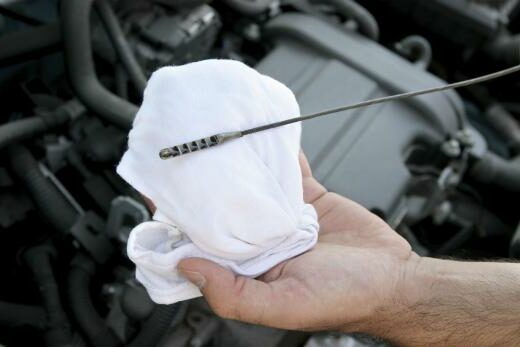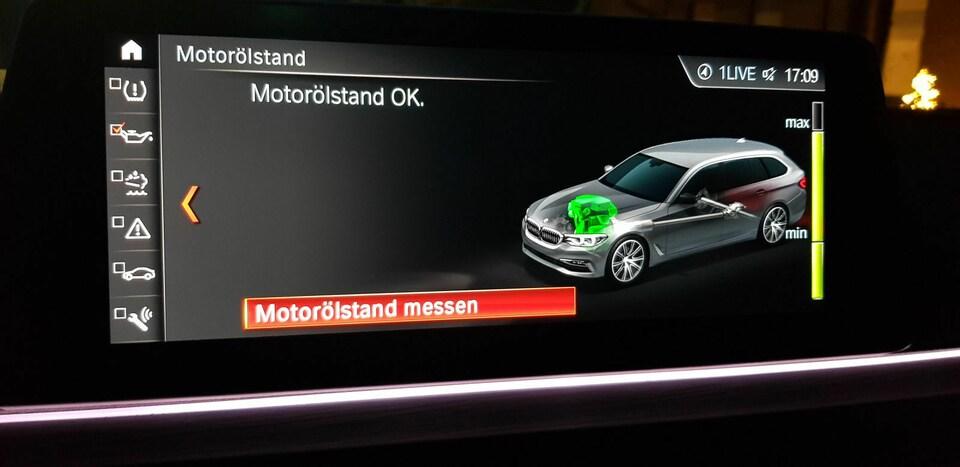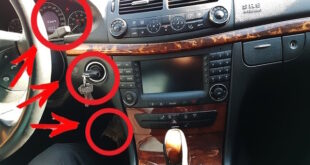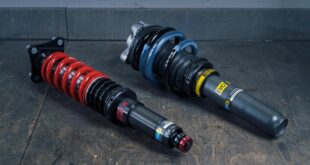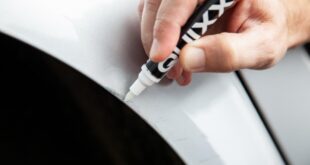Checking the oil level with a dipstick (car): There is a question that worries many motorists: when should the oil level be checked – with a warm or cold engine? The answer is simple: to get a correct measurement, the engine must "warm and have traveled at least 10 kilometers. Only then can the engine oil collect properly in the oil pan. To check the oil level, park the vehicle on a flat surface and turn off the engine.
Then wait a bit 2 Minutes, so that the hot engine oil can collect in the oil pan. Remove the dipstick, which is usually found near the filler neck in the engine compartment, and clean it thoroughly with absorbent paper or a lint-free cloth. Put the dipstick back completely into the opening and carefully pull it out again. To measure the oil level, check the oil film on the end of the dipstick. This one should between the min and max mark (rather in the direction of Max-Strich). If so, reinsert the dipstick all the way in and keep driving.
the oil level check
Oil level check with electronic measurement in the on-board computer: To check the oil level with the electronic measurement in the Board computer To measure correctly, the engine must be at operating temperature and have covered at least 10 kilometers. Park the car on a level surface, turn off the engine and wait about 2 minutes to allow the oil to collect. However, the process can vary depending on the vehicle. However, a corresponding menu item in the on-board computer should explain the process in a comprehensible manner. Depending on the vehicle, it may also be necessary to leave the engine running during the measurement. In addition to the on-board computer, information about this can be found in the operating instructions for the vehicle.
What happens if there is not enough engine oil?
Lubricating, sealing, cooling, cleaning - these are all tasks of the engine oil. But that only works if there is enough of it in the engine. Over time, the oil supply will decrease as part of the oil burns or evaporates. If the oil level is below the Min mark, it is important to carefully top up with the right engine oil up to the Max mark. For orientation: If the oil level is at Min, you should approx 1 liters of engine oil refill to reach the max mark. It is recommended to gradually top up the engine oil in small amounts (about 0,1 litres), wait about 2 minutes and then check the oil level again. This will avoid dangerous overfilling that can damage the engine. Almost all cars now have one warning lamp, which lights up when the oil level is low. However, when the signal light goes on, it may already be too late.
What to do with too much engine oil?
To be sure, wait a few minutes, clean the dipstick again, and check the oil level again. If this is clearly too high, you should take the vehicle to the workshop and discuss how to proceed. This also applies if you have accidentally filled in too much engine oil manually. Too much engine oil can foam, which leads to a reduction in lubricating performance and the oil can also get into the intake tract and cause damage there. It is important to check the engine oil level regularly (at best at every third refueling stop), as driving with a low oil level endangers your engine. Too high an oil level can also be harmful. While modern motor oils are much more efficient than they used to be, this is only true if you regularly check the oil level and the amount is always correct.
The following note is essential: For safety reasons, tuningblog recommends all repair, inspection and maintenance work exclusively to be carried out in a specialist workshop! Although our information is summarized to the best of our knowledge and belief, we cannot assume any liability for the content. All information is therefore "without guarantee".
Of course, that wasn't the end of it!
In this tuningblog category there are guides and instructions for common defects/repairs on the vehicle and for installing accessories/tuning parts. Our articles explain in a simple way common defects and the corresponding repairs and they also explain how the first signs of a defect become noticeable. In most cases, we also have initial clues to the repair instructions in our repair instructions approximate costs listed.
The goal of ourAuto Repair Guide“ is to create a head start in knowledge for the next visit to the workshop with initial tips. This may save you from tedious troubleshooting and you may even be able to do small things yourself. The same applies, of course, to the installation of accessories/tuning parts. Here, too, we would like to help with the implementation with instructions and tips. There are many other posts on this as well. Below is an excerpt of the last and HERE there are all previous instructions.
 tuningblog.eu Your magazine about tuning the car
tuningblog.eu Your magazine about tuning the car
